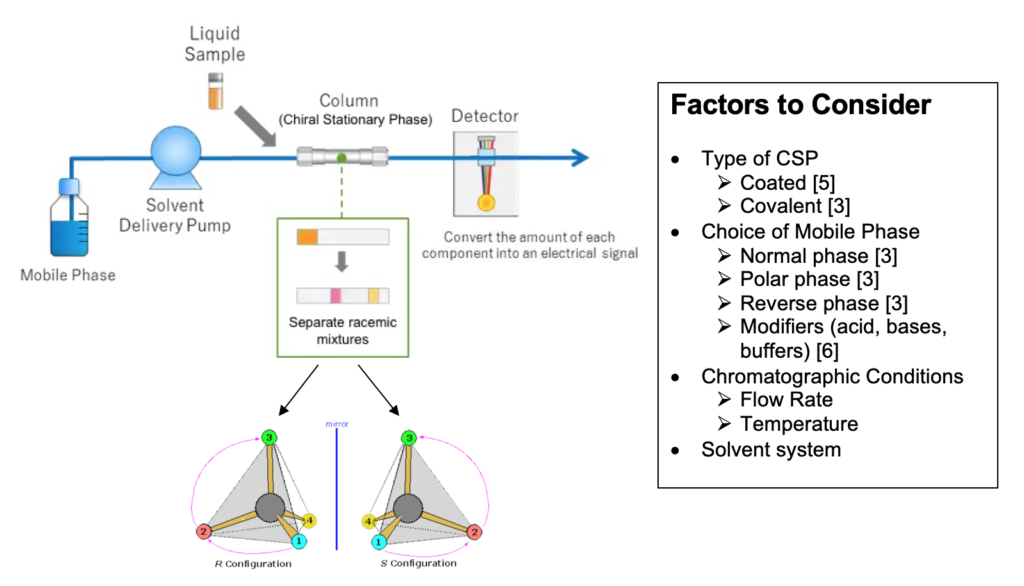
Enantiomers of drugs could have very different pharmacological activities. In pharmaceutical industry, high performance liquid chromatography (HPLC) is one of the most popular methods for separations. Theoretical studies are needed to (1)elucidate separation mechanism; (2) provide guidance to fast screen optimal experimental conditions.
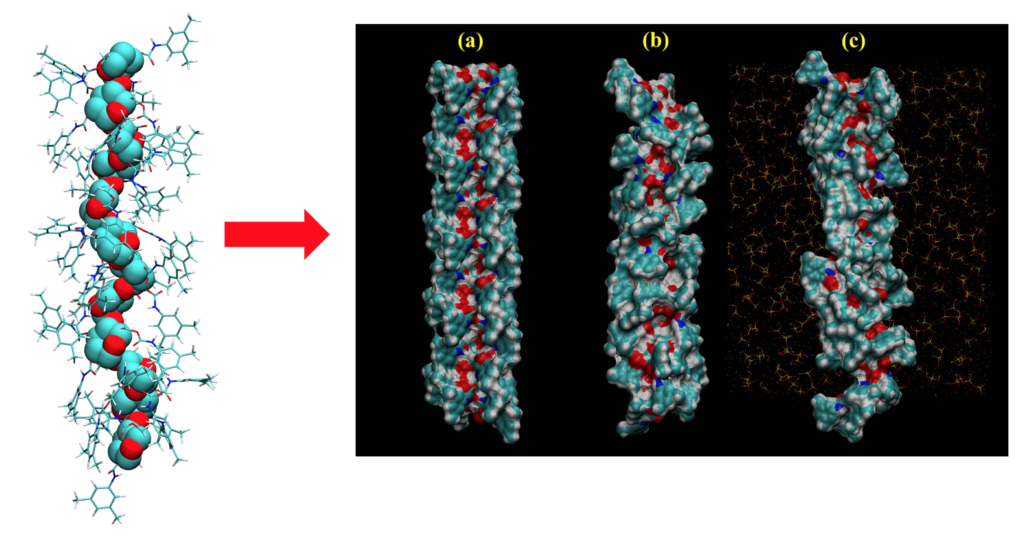
In this series of studies, we tried to replicate the HPLC separation process by simulating the interactions between a functional polymer strand, amylose tris (3,5-dimethylphenyl carbamate), (ADMPC) and chiral drug molecules in solution. (a) shows one strand of ADMPC from the crystal structure, (b) is a typical structure of one strand in solution. We finally came to a model in which ADMPC polymers were coated to an amorphous silica slab in parallel and antiparallel arrangements, which resembled the realistic chiral stationary phase in HPLC. (c) shows one of the 4 strands on the silica slab.
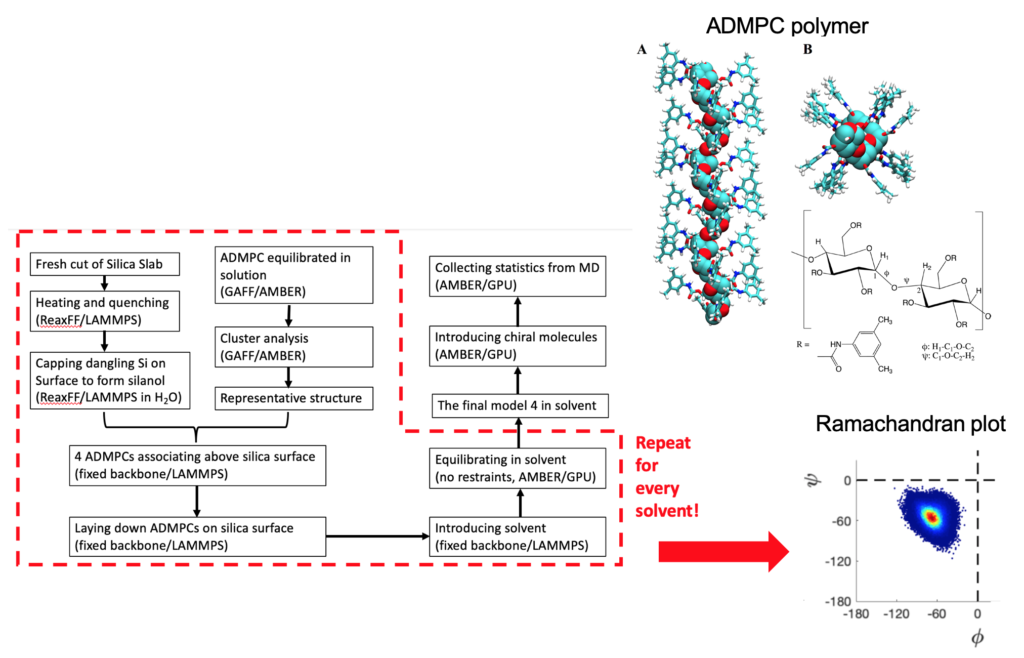
By using various MD simulation techniques, we ensured that the coated ADMPC polymer strands retained their left-handed helical backbone structure, which was tested and validated by using Ramachandran plot of glucosidic joint dihedral angles.

The distribution of hydrogen-bonding (HB) lifetimes from simulations is a reliable indicator to predict experimental retention factor. In the above example, we show the distribution of HB lifetimes of the usnic acid (UA) racemate, from which the simulated elution order can be read from distributions unambiguously: S-UA has both, overwhelmingly, more HB events (higher columns), and longer-lived HB pairs (longer tailing columns) across the different donor-acceptor pairs.
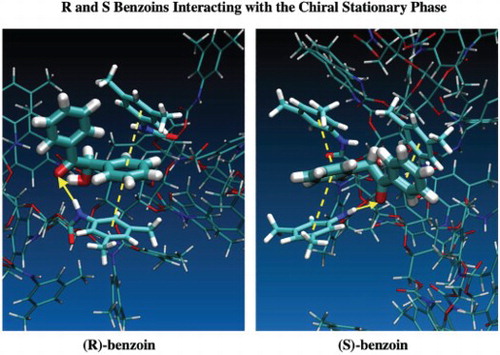
Besides the HB interactions, the phenyl group can provide ring-ring interactions, which also contributes to chiral recognition. In the above example, both phenyl groups of S-benzoin can interact with ADMPC side groups, while only one ring of R-benzoin is involved. Such structure allows S-benzoin to have stronger and longer-lived HBs with the ADMPC polymer, thus leads to the separation of chiral enantiomers.
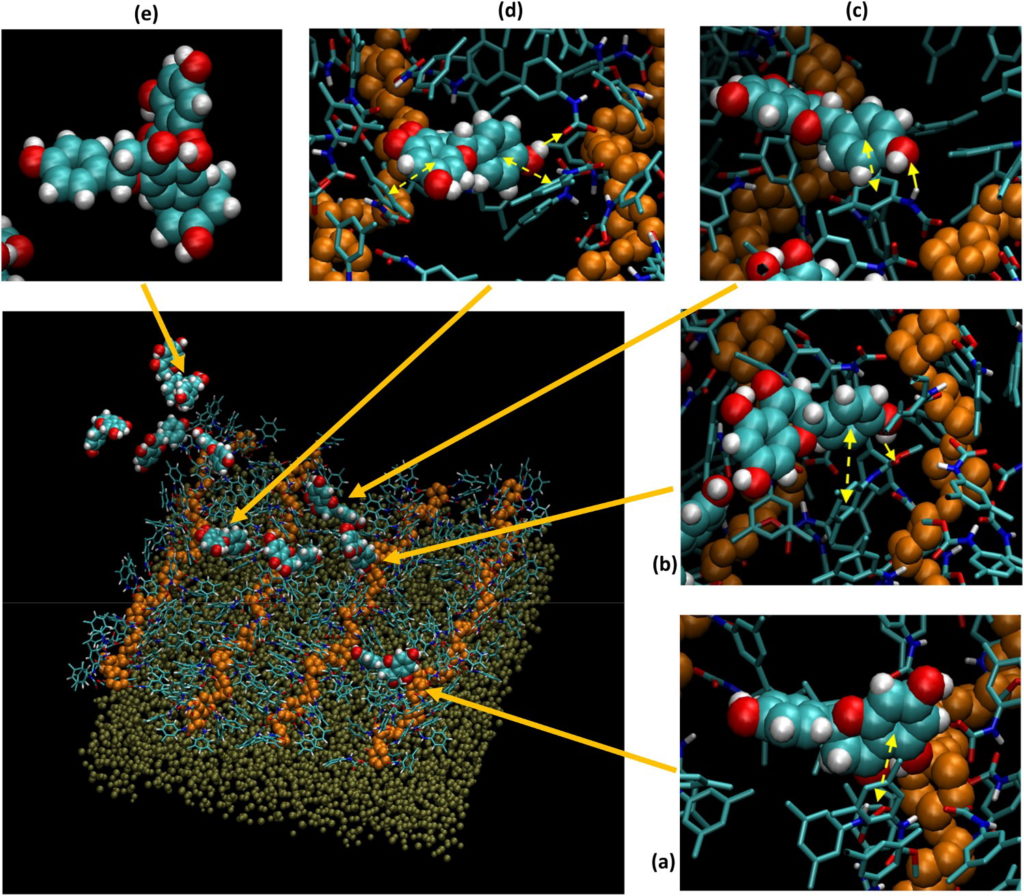
The above pictures illustrate various kinds of interactions that happened between a naringenin molecule with the ADMPC polymer, and also with another naringenin molecule to form a dimer. (a) a naringenin and ring group from ADMPC are forming a ‘parallel displacement’ configuration; (b) a naringenin molecule is forming an HB with ring groups also interacting simultaneously; (c) a similar event to (b) with different HB sites; (d) one naringenin is interacting with two ADMPC strands simultaneously through different kinds of interactions; (e) two naringenin are forming a dimer.